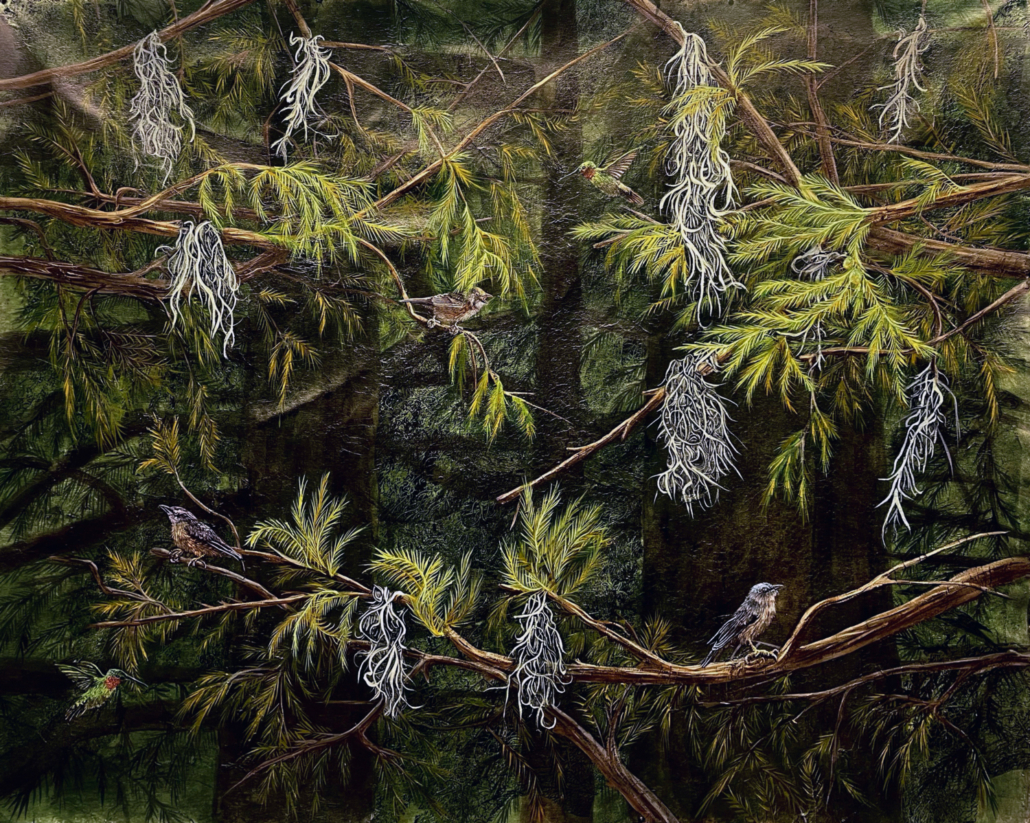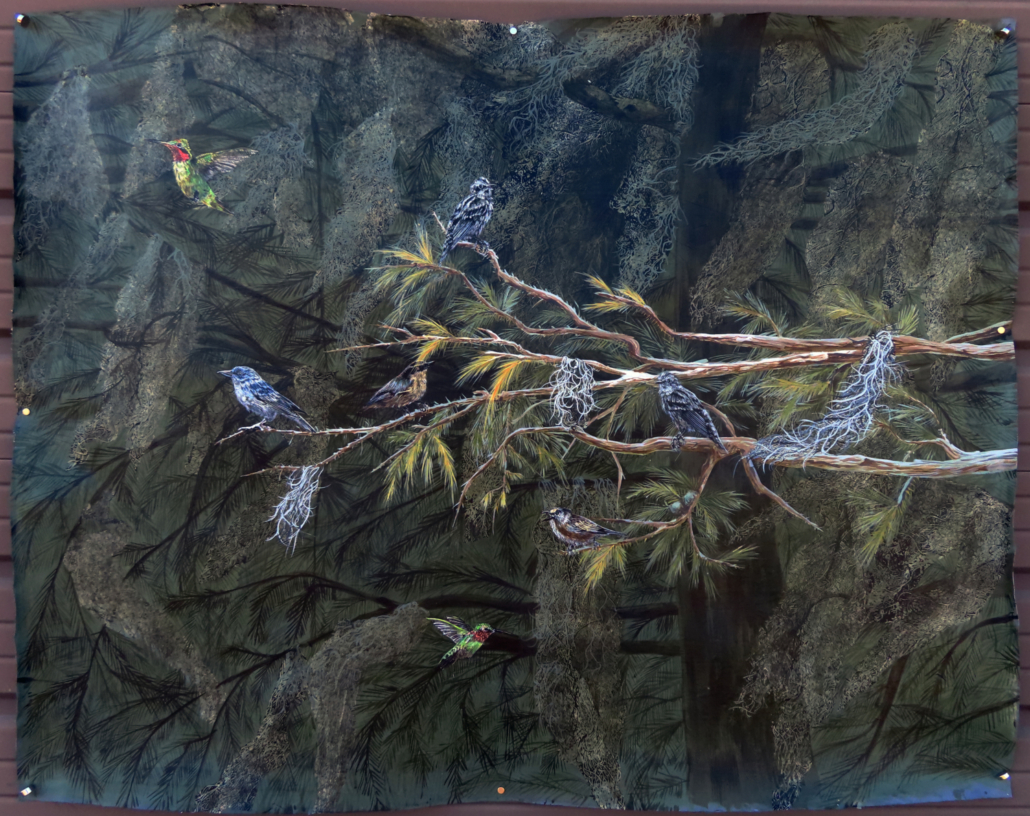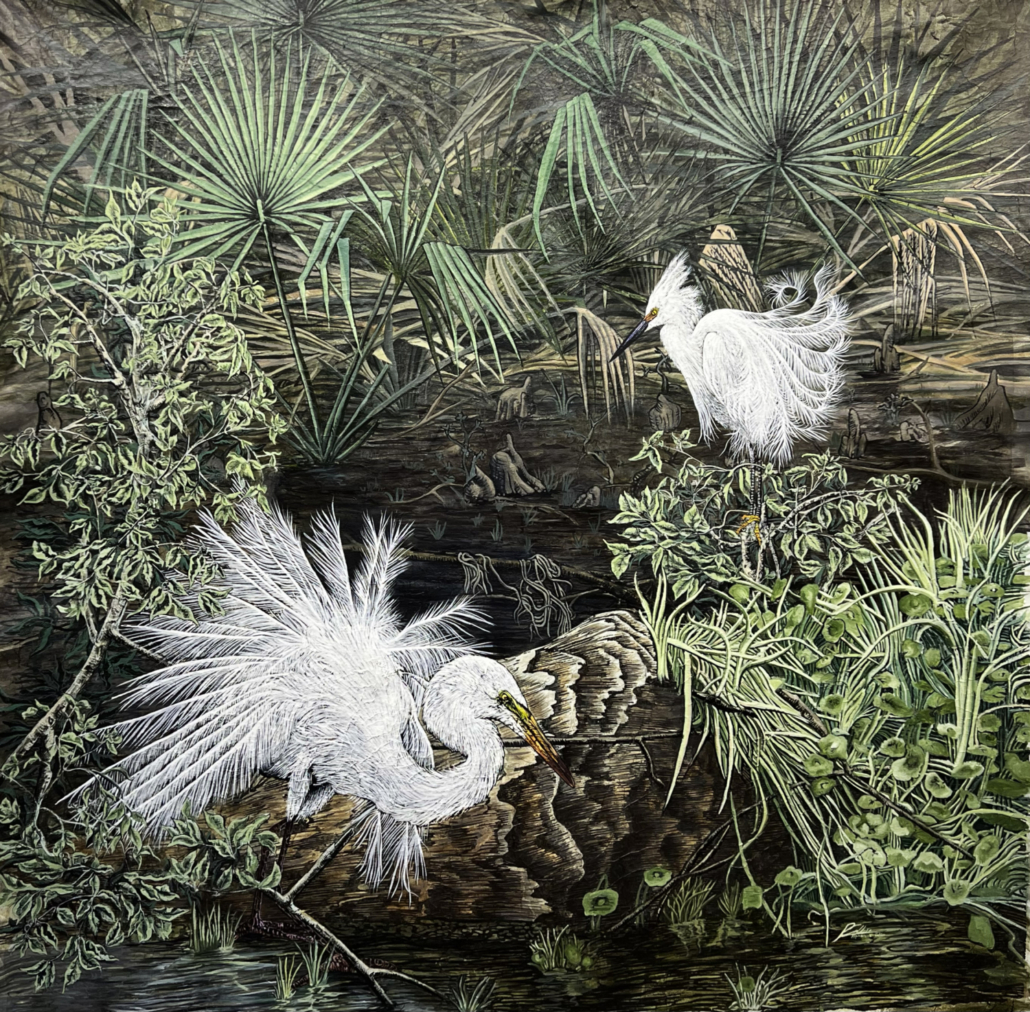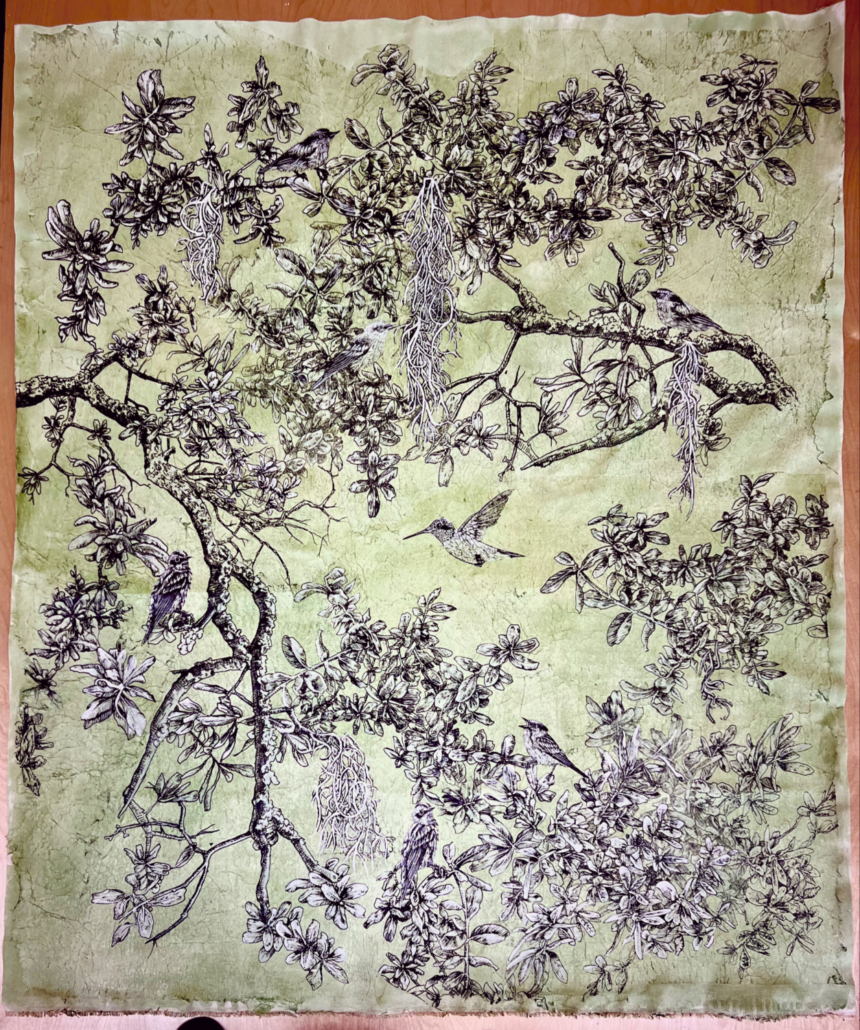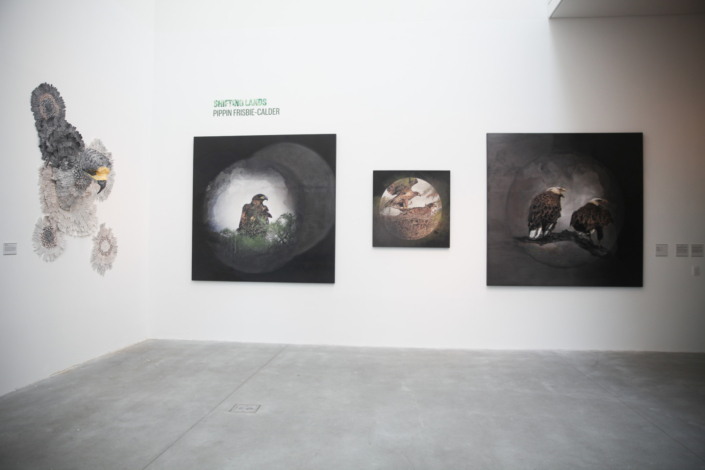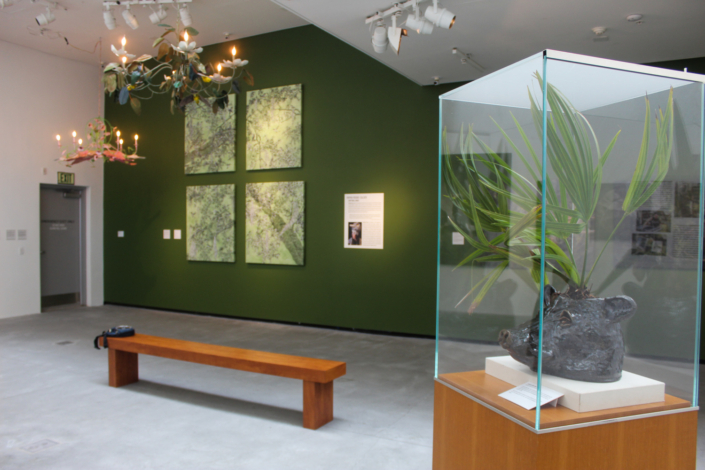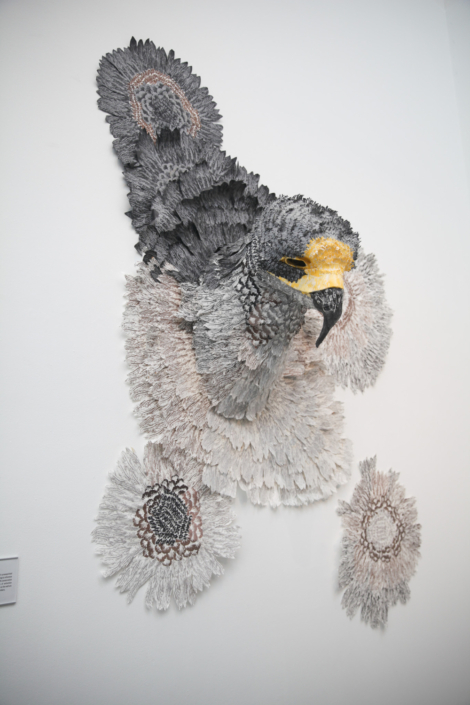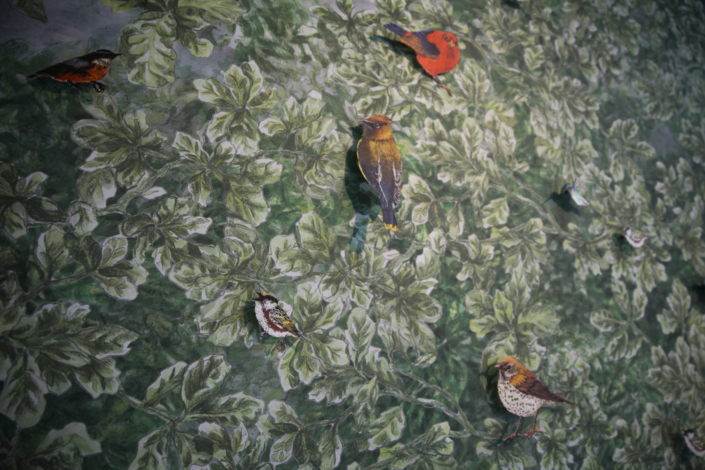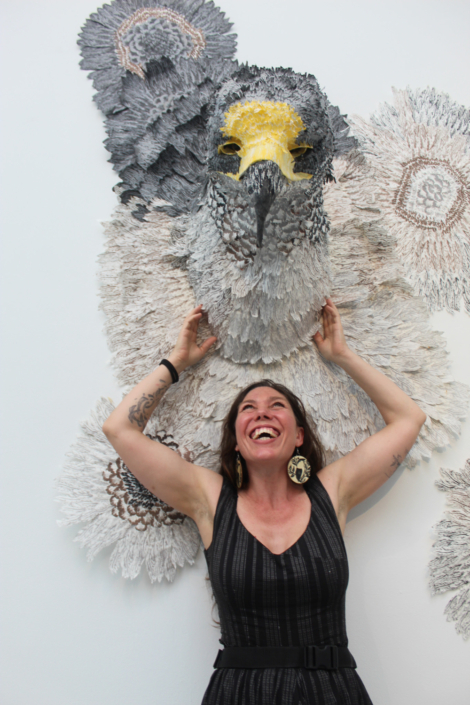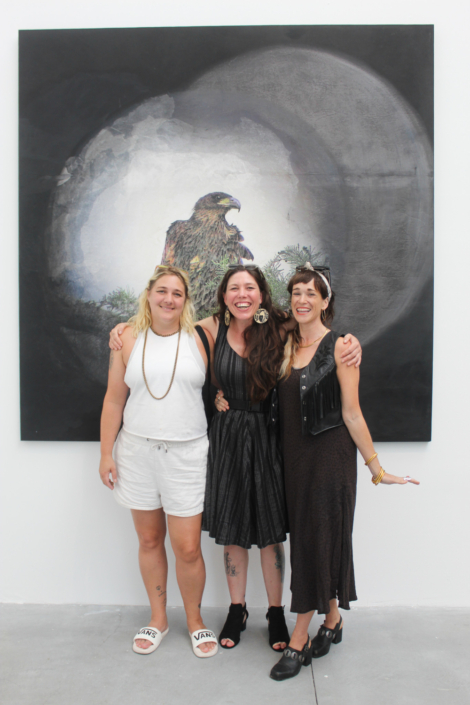Pippin Frisbie-Calder
Shifting Lands
IP Gallery
Exhibition Text:
This exhibition is a visual art series by Frisbie-Calder that examines the ecosystems of the Gulf South, particularly Louisiana and Mississippi. Frisbie- Calder first photographs formations of leaves, migratory birds, and other flora. Using the photographs as a reference, she draws the species, then uses a variety of printmaking techniques to create a “library” of printed images. She pulls from this library to collage hundreds of pieces of an ecosystem, which are assembled in a quilt-like fashion. This method allows Frisbie-Calder to reimagine southern ecosystems in a playful and expressive form.
The series explores the concept of shifting baselines, which is the change in our understanding and expectations of the natural world over time. Each successive generation that becomes accustomed to environmental degradation and the decreased abundance of wildlife is less aware of the magnitude of what has been lost. We acclimate to absence. By combining native and introduced species, Shifting Lands reflects on the compromised yet still beautiful natural
environment of the Gulf South, and raises questions about the future of these eroding landscape.
Frisbie-Calder often collaborates with biologists, combining years of their research with her own experiences. The integration of biology with art results in species-specific visuals that help demystify scientific information.
Artist Statement:
My work investigates ecosystems and demystifies scientific outcomes, while calling into question human culpability and responsibility. Working with Microbiologists, Ornithologists and Biologists I create large-scale installations and prints exploring issues of climate change, species extinction and environmental stewardship. The materiality of printmaking reverses its subject and injects personality into every mark, transforming my drafting in different ways depending on the use of wood, collagraph or screen. The specificity of science requires reimagining my print practice and changes my methodology in service to ornithology, or ecology. The work I am happiest with always finds a balance between printmaking, science and draftsmanship, unifying to tell big picture stories about humanity’s complicated relationship with nature.

Photo by Cedric Angeles
Biography:
Pippin was born in Hammond, Louisiana, and spent many of her formative years living on a boat her parents built. Her work is characterized by an intense observation of nature and a primary concern for conservation, which she realizes with considerable virtuosity. She makes sculptures, large-format woodblocks, and silkscreen prints that she turns into immersive environments. As an advocate and educator, Pippin conducts workshops and is involved in numerous community projects raising awareness about conservation and the beauty of the natural world.
She received her Bachelor of Fine Arts at the Rhode Island School of Design, and her Master of Fine Arts at Tulane University. She currently lives in New Orleans, where her work is shown regularly.
The Process:
Printmaking is the process of transferring ink onto paper. First, a matrix or plate is carved or a screen is exposed. Next, ink is applied. Finally, with pressure, normally provided by a press, the ink is transferred from the plate or screen to the paper. The final product is called a print. The plate or screen can then be re-inked and pressed onto another piece of paper, again and again, creating a series of ideally identical prints, which are called an edition.
Pippin Frisbie-Calder’s process starts by printing open editions onto tissue paper. She then “quilts” with these pieces onto canvas, placing the printed paper loosely onto the canvas. Once satisfied with an arrangement, she uses archival glue to permanently set the tissue onto the canvas. Often these finished compositions will be made up of hundreds of different pieces of tissue paper. After the glue has dried, she works back into the canvas with layers of acrylic paint, adding shadows and highlights until the piece feels finished.
The natural process of printmaking reverses its subject and injects personality into every mark. The delicate biological details she captures in each scene require the print process to be reimagined. Representing the natural world with as much detail as possible often blends the use of transfer media. Finding the balance between scientifically capturing each
ecological detail and her creative process brings Pippin the most joy in her work. Each layer joins to the one below, unifying a big picture, similarly reflecting humanity’s complicated relationship with nature.
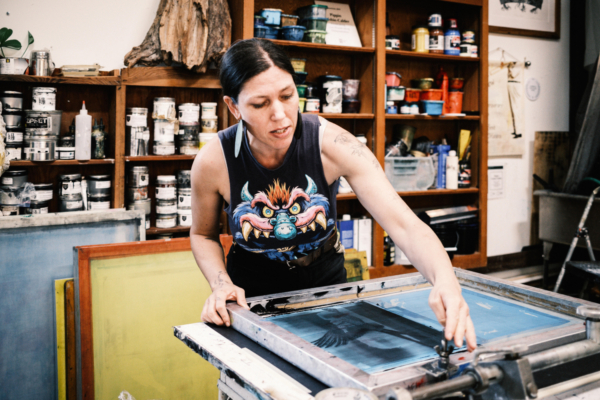
Artist and printmaker Pippin Frisbie-Calder in her Arabi, Louisiana studio.
This exhibition was sponsored in part by: John and BarbaraHazeltine Charitable Fund and Traditional Fine Arts Organization, TFAOI.org.
